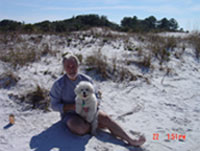The Tale of the Floppy Eared Bunny
 "(The Saga of Chymopapain)
"(The Saga of Chymopapain)
As the laboratory staff watched in awe the rabbit's ears began to wilt following the intravenous injection of the enzyme chymopapain. It remained for orthopedic surgeon Lyman Smith to turn this observation into a new therapy for the treatment of herniated discs. Why, he reasoned couldn't chymopapain also dissolve the collagen in a herniated disc? From this basic observation the saga of chemonucleolysis (enzymatic dissolution of disc collagen) with chymopapain (the active ingredient in Adolf's meat tenderizer) was born. It turned out to be a textbook example of how not to do things in medicine including high grade marketing blitz (the " M2H" factor). This resulted in a patient stampede to have chemonucleolysis.
There can be no question but that the M2H factor for chymopapain was one of highest ever recorded. Because it wasn't released by the United States Food and Drug Administration until November 10, 1983 a large cottage industry had been created in Canada starting in the 1970s. This was a modern version of the "underground railroad" where lines of U.S. clients were often passed through enzymatic assembly lines (a process which has become reversed in recent years). The good news was that only a small number of Canadian Orthopedists and Neurosurgeons practiced chemonucleolysis and they were expert at it. But even the doctors became caught up in the hype. One prominent Canadian orthopedic chymopapain advocate stated at a medical meeting that all he required was a "few cc's of chymopapain" to take care of all of his spine patients! The widespread Canadian expertise was unfortunately not also reflected in the United States where approximately 7,000 orthopedic and neurosurgeons took a one day "training" course in this needle technique and pronounced themselves fully qualified to perform chemonucleolysis at their local hospitals (whose credentialing committees nodded in assent) after Food and Drug Association approval. Those few hospitals who believed that some degree of apprenticeship was required by these neo-procedurists typically gave in to the argument that since other institutions weren't requiring such that their physicians would become non-competitive and thus loose patients. Their credentialing committees then rubber stamped this example of poor medical practice and hospital self-interest.
While some of the 7,000 American trainees actually had some prior experience with needling techniques and fluoroscopic imaging many did not. The sad part of this tale is that the inadvertent deposition of chymopapain into nerve tissue as well as the sub-arachnoid space created some horrendous problems (including stroke, paraplegia, and death) for a significant number of patients. Even though injecting chymopapain simply required placing the tip of a needle in the nucleus pulposus of a disc many practitioners learned that this was not as simple as it seemed. These needles often ended up in other locations as shown below.
Observations
The incidence and prevalence of unnecessary, but serious, complications with the use of chymopapain gave it such a bad name that it soon fell into disuse in the United States. Now, one might think that this is was the end of this tale, but it isn't. Chemonucleolysis with chymopapain (or other enzymes such as collagenase) really weren't a bad idea if qualified people were involved in injecting them. The real problem was the high M2H factor which created a feeding frenzy for patients as well as their physicians.
As it turned out, even when chymopapain was injected into the right location there were important associated liabilities. A major example of this was replacing leg pain (by dissolving the disc) with incapacitating back pain caused by the sudden collapse of the disc interspace producing pressure on the facet joints. Another problem was the high level of allergenicity of the drug itself.
Unfortunately the use of chymopapain created new problems for patients. Could the resulting back pain have been addressed?. The answer is yes, by the use of anti-gravitational traction (but it wasn't). After a respectful period of time chemonucleolysis with chymopapain began to re-emerge in Europe in a lower dose application....where it remains today. In the United States it continues to remain unused and shunned. Despite the tale of chymopapain and its unfortunate demise the M2H phenomenon is still alive and well in the over-promoting of medical devices and techniques even today. "
The above article is the property of and used with the permission of Dr. Charles V. Burton
http://www.burtonreport.com/infspine/mininvasprocchemonucleolysis.htm
It is with the discovery of his website and the study of his vast knowledge and material that has helped me endure and understand the truth of the first of many procedures, that would take me down my 25 year (so far) path to devastating Chronic Pain.







No comments:
Post a Comment